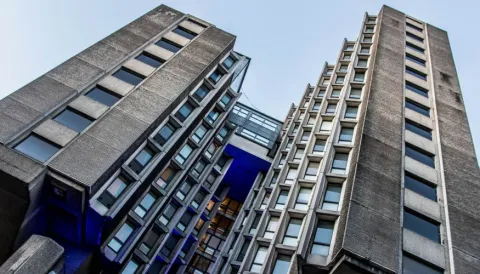Seismic guidelines underestimate impact of ‘The Big One’ on Metro Vancouver buildings

Scientists examining the effects of a megathrust earthquake in the Pacific Northwest say tall buildings across Metro Vancouver will experience greater shaking than currently accounted for by Canada’s national seismic hazard model.
The region lies above the Georgia sedimentary basin, which is made up of layers of glacial and river sediments sitting on top of sedimentary rock. In the event of an earthquake, it would jiggle and amplify the seismic waves, causing more intense and longer-lasting tremors. However, the amplification caused by the sedimentary basin is not explicitly accounted for in the 2015 seismic hazard model, which informs Canada’s national building code.
The latest U.S. national seismic hazard model now explicitly accounts for sedimentary basin amplification, but Canada’s latest seismic hazard model, released this October, still doesn’t, says lead researcher Carlos Molina Hutt, a structural and earthquake engineering professor at UBC.
“As a result, we’re underestimating the seismic hazard of a magnitude-9 earthquake in Metro Vancouver, particularly at long periods. This means we’re under-predicting the shaking that our tall buildings will experience,” he warned. “Fortunately, Natural Resources Canada, responsible for the development of our national seismic hazard model, recognizes the potential importance of basin effects in certain parts of Vancouver and is actively reviewing and participating in research on the topic. They intend to address basin effects in the next seismic hazard model.”
Using physics-based computer simulations, the researchers found that regions where the Georgia Basin is deepest will have the greatest seismic amplification. Delta and Richmond will experience the most amplification, followed by Surrey, New Westminster, Burnaby, Vancouver and North Vancouver. West Vancouver, which sits just outside the basin, will have the least.
Older, tall buildings at greater risk
The researchers also evaluated the impact of the magnitude-9 simulations on tall reinforced concrete shear wall buildings, of which there are more than 3,000 located in the Lower Mainland. They found that those built to building codes from the 1980s and earlier are at the greatest risk of severe damage or even collapse, with buildings in the 10- to 20-storey range experiencing the worst impacts.
“We have these pockets of tall buildings within the Georgia Basin—in Vancouver, Burnaby, Surrey and New Westminster. In general, based on a comparison of the code requirements in the past versus the code requirements now, many of our older buildings are vulnerable to these large earthquakes, particularly if we consider the amplification effect of the Georgia Basin,” said Molina Hutt. The differences in expected performance between new buildings and older constructions reflects continuous improvements in seismic hazard estimates and engineering design provisions.
“When we build a structure, it only needs to meet the code of the time when it was built. If there is a future change in the code, you don’t have to go back and upgrade your building. To address vulnerable existing buildings, jurisdictions must explore different seismic risk reduction policy options and adopt the most effective mitigation strategies,” Molina Hutt added.
The study, published recently in Earthquake Engineering & Structural Dynamics, notes that concrete is the predominant construction material for buildings taller than eight storeys in the city of Vancouver, constituting 90 per cent of a total 752 buildings identified. Of these, more than 300 are reinforced concrete shear wall constructions that pre-date 1980.
“Typically, people think that, if we have a magnitude-9 Cascadia subduction zone earthquake, it will be worse in Victoria, because they’re closer to the seismic source. But the reality is that, for tall buildings, we’re going to be worse off in Vancouver, because this basin amplifies the shaking in taller structures,” Molina Hutt noted. The probability of a magnitude 8 or 9 Cascadia earthquake is estimated to be 14 per cent in the next 50 years.
“We’re collaborating closely with our neighbours to the south, who are taking active steps to account for these basin amplification effects,” said Molina Hutt. “Our work attempts to assess the impacts of neglecting these effects so we can appreciate their significance and take action.”
Photo by Johanna Buguet on Unsplash


